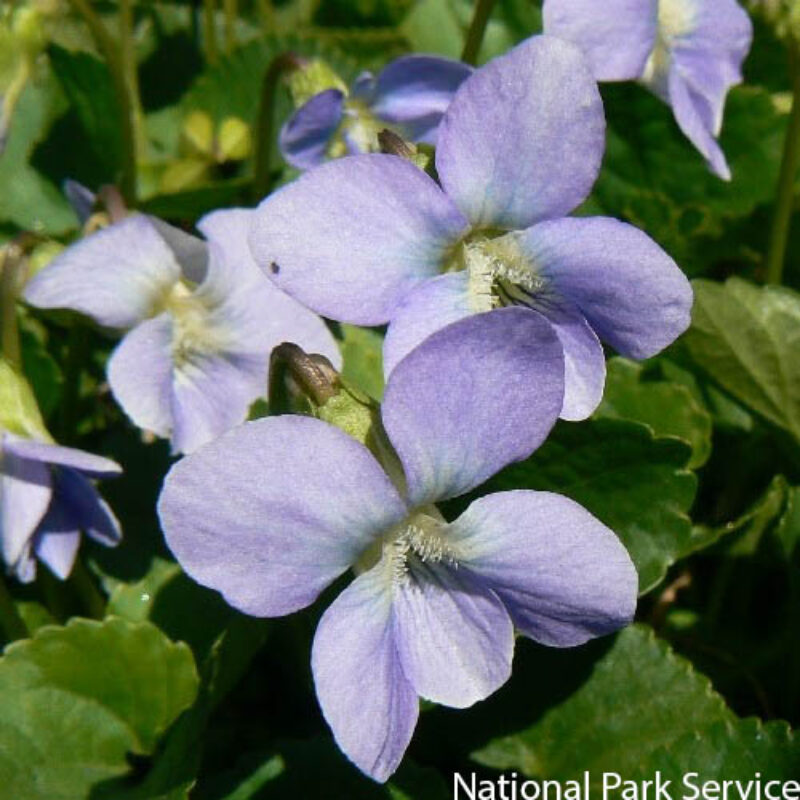Missouri VioletViola missouriensis
Missouri Violet spreads by rhizomes and can form colonies that give way to beautiful purple blooms in spring. Typically found in woodlands and thrives in well-drained soils.
USDA symbol: VIMI3
General Information
| Plant Type | Forb |
|---|---|
| Height | 3 to 6 inches |
| Light Exposure | Part Sun, Shade |
| Soil Moisture | Medium |
| Bloom Color | Blue |

Tolerances
| Flooding / Inundation Tolerance | Low |
|---|---|
| General Resilience | 6 |
| Salt Tolerance | Medium |
| Stress Tolerance | Acidic Conditions |
Pollinator Value: High
| Bloom Months | May |
|---|---|
| Larval Host of | Butterflies |
| Specific Pollinators Hosted | Numerous butterfly species |
| Pollinator Benefit | Insect Pollinated, Provides Nectar, Supports Generalists |
Project Planning
| Project Type | Rain Garden, Restoration |
|---|---|
| Coefficient of Conservatism | 3 |
| Herbivore Sensitivity | Low |
| Lifespan | Perennial |
| Rate of Spread | Slow |
| Soil Stabilization | Shallow |
| Vegetative Reproduction | Clonal |
Range
| County | Big Stone, Blue Earth, Brown, Dakota, Goodhue, Houston, Lake, Pipestone, Stearns, Swift, Wabasha, Washington, Watonwan, Winona |
|---|---|
| Ecoregion | Driftless Area, Northern Glaciated Plains, Western Cornbelt Plains |
| Approximate Eco Province | Eastern Broadleaf Forest, Prairie Parkland |
